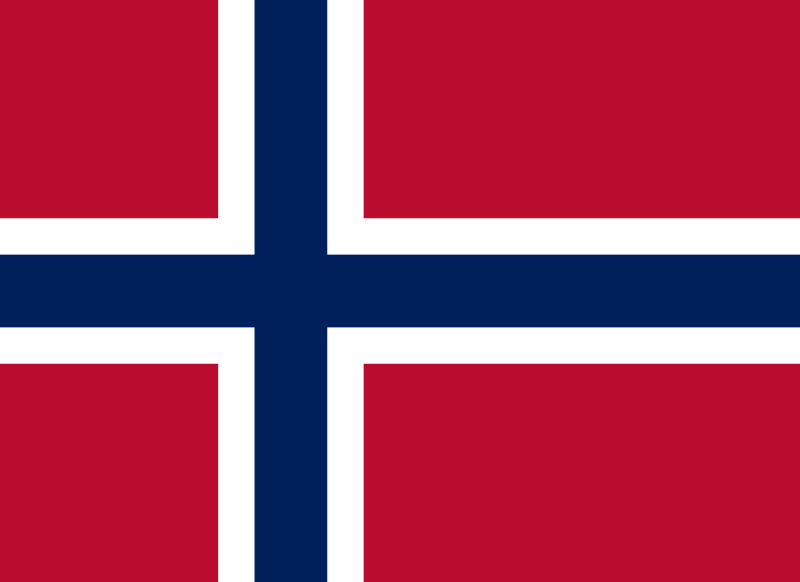 Norway (English pronunciation: /ˈnɔrweɪ/; Norwegian: Norge (Bokmål) or Noreg (Nynorsk), officially the Kingdom of Norway, is a Nordic country in Northern Europe occupying the western portion of the Scandinavian Peninsula, as well as Jan Mayen and the Arctic archipelago of Svalbard.
Norway (English pronunciation: /ˈnɔrweɪ/; Norwegian: Norge (Bokmål) or Noreg (Nynorsk), officially the Kingdom of Norway, is a Nordic country in Northern Europe occupying the western portion of the Scandinavian Peninsula, as well as Jan Mayen and the Arctic archipelago of Svalbard.
Norway has a total area of 385,252 square kilometres (148,747 sq mi) and a population of about 4.8 million. It is one of the most sparsely populated countries in Europe. The majority of the country shares a border to the east with Sweden; its northernmost region is bordered by Finland to the south and Russia to the east; and Denmark lies south of its southern tip across the Skagerrak Strait. The capital city of Norway is Oslo. Norway’s extensive coastline, facing the North Atlantic Ocean and the Barents Sea, is home to its famous fjords.
After World War II, Norway experienced rapid economic growth, with the first two decades due to the Norwegian shipping and merchant marine and domestic industrialization, and from the early 1970s, a result of exploiting large oil and natural gas deposits that had been discovered in the North Sea and the Norwegian Sea.
Today, Norway ranks as the third wealthiest country in the world in monetary value, with the largest capital reserve per capita of any nation. Norway is the world’s fifth largest oil exporter, and the petroleum industry accounts for around a quarter of its Gross domestic product. Following the ongoing financial crisis of 2007–2010, bankers have deemed the Norwegian krone to be one of the most solid currencies in the world.
Norway has rich resources of oil, natural gas, hydroelectric power, forests, and minerals, and was the second largest exporter of seafood (in value, after the People’s Republic of China) in 2006. Other major industries include shipping, food processing, shipbuilding, the metal industry, chemicals, mining, fishing, and the pulp and paper products from forests.
Norway maintains a Scandinavian welfare model with universal health-care, subsidized higher education, and a comprehensive social security system. Norway was ranked highest of all countries in human development from 2001 to 2007, and then again in 2009. It was also rated the most peaceful country in the world in a 2007 survey by Global Peace Index.
Norway is a constitutional monarchy and parliamentary democracy, with King Harald V as its head of state and Jens Stoltenberg as its prime minister. It is a unitary state with administrative subdivisions on two levels known as counties (fylker) and municipalities (kommuner). The Sámi people have a certain amount of self-determination and influence over traditional territories through the Sámi Parliament and the Finnmark Act.
Although having rejected European Union membership in two referendums, Norway maintains close ties with the union and its member countries, as well as with the United States. Norway remains one of the biggest financial contributors to the United Nations, and participates with UN forces in international missions, notably in Afghanistan, Kosovo, and Sudan.
Norway is a founding member of the United Nations, NATO, the Council of Europe, and the Nordic Council, and is a member of the European Economic Area, the WTO, and theOECD.

Notes from Wikipedia








